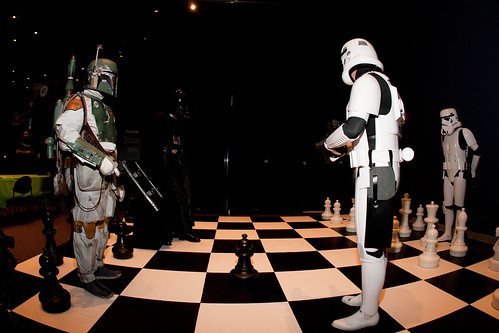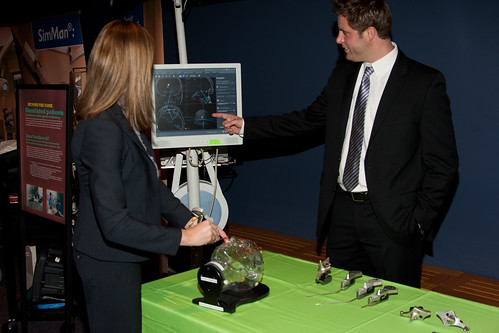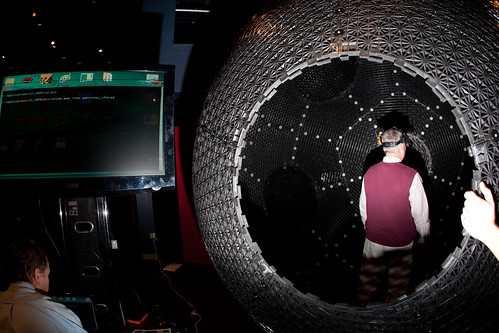One interesting thing about living in Orlando is that you're likely to have at least a second-degree connection to someone in the hospitality business, and sooner or later, that results in an invitation to a restaurant's pre-opening, when the staff are being trained. Because the staff are practicing, the food is free. You pay only for drinks.
Interesting, but not always beneficial. Because the staff are practicing, pre-openings sometimes have poor service and improperly filled orders. But one forgives, because they are practicing, and it is free.
But the very newness of the restaurant means you don't always know what you are getting into. For example, through a friend-of-a-friend, we got invited to the pre-opening of
Brick House Tavern on International Drive. We had no information going in except the name and address.
The restaurant's theme turned out to be "man cave."
Brick walls. Couches instead of booths. Industrial-style exposed ductwork. TVs everywhere. Astonishingly loud music.
And the waitresses -- no waiters here -- are trying to outdo Hooters for scantily-cladness. Tight, low-cut black tops and low-riding pants are the uniform, along with, it seems, big belts and navel piercings.
The waitresses are far too chatty for my introverted taste, but I suspect they are told to be so. One told us she preferred working for Brick House over other restaurants, where wait staff are expected to be more formal. She said, "here, we can just let it all hang out." Yes, she actually said that. Maybe it's part of the training, along with the instruction to sit on the arms of couches next to male patrons, regardless of whether the gentlemen are accompanied by ladies.
 |
| Fish and chips, hold the chips. Photo by Rachel Pereira |
The food was delicious, although when I ordered a side salad with my fish and chips, I expected to get the fish and chips plus a side salad. Instead I got fish and salad. This was some of the best fried fish I've ever had. the mac and cheese was yummy, too. Great food, but my doctor will probably put me on statins now.
But even though the food was excellent, I will never go there again. The loudness of the music would be enough to keep me away. The prurient overtones just seal the deal.









